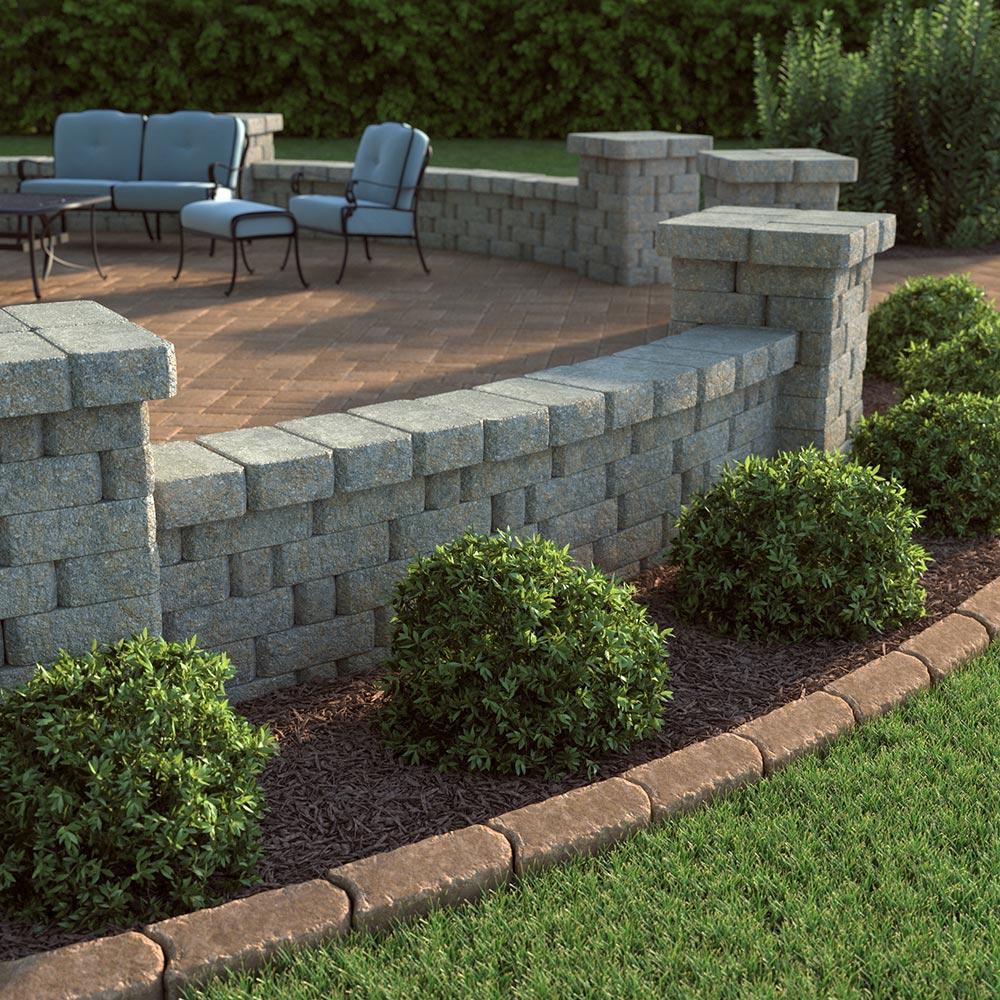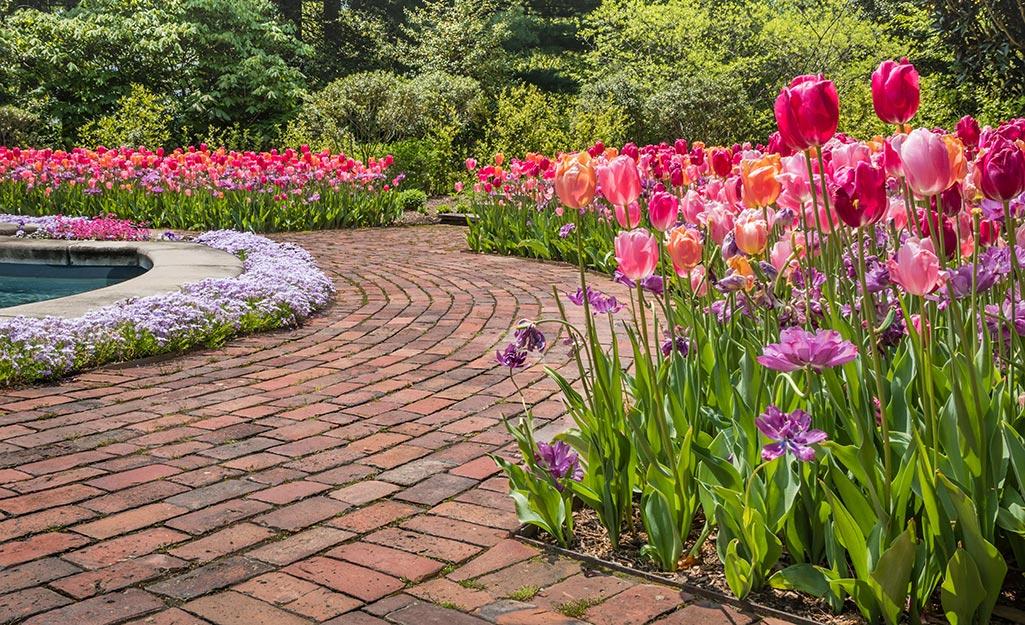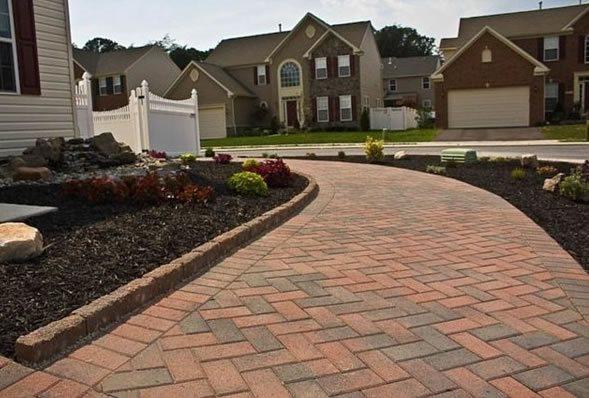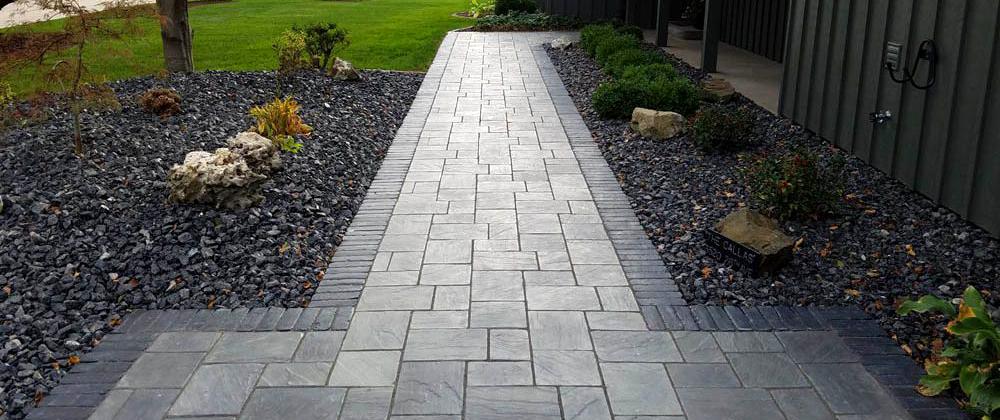Are your landscaping bricks sinking and ruining the beauty of your pavement? Don’t fret! This article will explore ways to keep landscaping bricks from sinking, ensuring a stable and visually stunning pavement.
Also, learn to select high-quality materials, create a sturdy foundation, use proper installation techniques, and implement regular maintenance practices. So say goodbye to uneven bricks and hello to a durable and captivating landscape.

Choose High-Quality Paving Materials
- Choose high-quality paving materials to prevent sinking bricks.
- Opt for durable stones or bricks designed for outdoor use.
- Consider the shape, color, and overall quality.
- Invest in reliable materials to ensure longevity and resist sinking.
Properly Prepare the Installation Area
Proper preparation of the installation area is essential to ensuring the longevity of your brick pavement.
Here’s what you need to know:
Removing vegetation: Clear the area of any weeds, grass, or plants that may undermine the stability of the bricks.
Leveling the area: Use a shovel or a grading rake to level the ground, ensuring a smooth and even surface for laying the bricks.
Addressing drainage issues: Ensure proper drainage by evaluating the area’s slope.
Create a Sturdy Foundation: A solid foundation is key to preventing bricks from sinking. Follow these steps to establish a sturdy base:
Building a good base: Start excavating the area to the appropriate depth, typically around 6-8 inches.
Compacted gravel: Fill the excavated area with a layer of compacted gravel. This provides stability and drainage for the bricks.
Sand and landscape fabric: Place a layer of sand on top of the gravel and add landscape fabric to prevent weed growth. Both aid in maintaining a level surface and preventing sinking.
Benefits of good bulk materials: High-quality materials, such as gravel and sand, ensure a stable foundation and reduce the risk of sinking over time.

Use the Right Installation Techniques
Proper installation techniques are vital for durable and visually appealing brick pavement. Consider the following:
Laying and installing: Start by placing the bricks in the desired pattern, ensuring a tight fit with even spacing between them.
Proper alignment: Maintain consistent alignment throughout the installation to prevent unevenness and potential sinking.
Stable interlocking patterns: Use interlocking patterns, such as herringbone or basketweave, to enhance stability and distribute weight evenly.
Tips for accuracy: Utilize a garden hose or string lines as guides to maintain straight lines. Use a level to install the bricks unevenly and at the desired height.

Compact the Layers
Properly compacting each layer of the installation is crucial to preventing the sinking and shifting of the bricks. Here’s why it matters:
Significance of compacting: Compact the base layer of gravel and subsequent layers of sand to increase their density and stability. This minimizes the risk of settling and ensures a solid foundation for the bricks.
Benefits of using a compactor: By using a compactor, you achieve greater compaction and eliminate air gaps within the layers. This enhances the overall stability of the pavement, reducing the chances of sinking and movement over time.
Apply Edge Restraints
Applying edge restraints is essential to maintaining the integrity of your brick pavement. Consider the following:
Importance of edge restraints: Edge restraints prevent the bricks from shifting or moving outward, ensuring the pavement stays in place.
Types of edge restraints: Choose from various options, such as plastic or metal. Plastic options are lightweight and easy to install, while metal options offer greater durability.
Effective installation: Install the edge restraints along the perimeter of the pavement, securing them firmly into the ground. This will provide structural support and help prevent the sinking or displacement of the bricks.
Control Weeds and Vegetation
Weeds and vegetation pose a threat to the stability of landscaping bricks. Here’s why and how to control them:
Destabilizing effect: Weeds and vegetation can grow between the bricks, exerting pressure that can cause the bricks to shift or become uneven over time.
Use of landscape fabric: Installing landscape fabric beneath the base layer of the bricks can effectively suppress weed growth. This fabric is a barrier, preventing weeds from penetrating the surface and destabilizing the pavement.
Organic mulch: Applying organic mulch around the brick installation area is a natural weed deterrent. It helps to smother weed growth while retaining moisture in the soil, promoting healthy plant growth and stability.
Equal fertilizer: Applying equal fertilizer to the surrounding soil promotes the growth of desirable plants while inhibiting weed growth. This balanced approach enhances the stability of the pavement by minimizing the competition between weeds and other plants.
Regular Maintenance
Regular maintenance is essential for preventing sinking and damage to the brick pavement. Consider the following maintenance activities:
Debris removal: Regularly remove leaves, dirt, and debris from the surface of the bricks. This prevents accumulation, which can lead to water pooling and potential sinking.
Repairing cracks: Promptly repair any cracks or damages in the bricks. Cracks can allow water to seep in, weakening the foundation and leading to sinking over time.
Addressing drainage issues: Ensure proper drainage by maintaining clear pathways for water to flow away from the pavement.
Address Unevenness in Early
Addressing uneven areas early on is crucial for preventing further sinking and damage. Consider the following tips:
Identify uneven areas: Regularly inspect the brick pavement for any signs of unevenness, such as gaps, tilting bricks, or uneven surfaces.
Additional base material: For minor imbalances, adding additional base material, such as compacted gravel or sand, can help level the area and stabilize the bricks.
Leveling compounds: In cases of significant unevenness, leveling compounds can be used to create a smooth and level surface. Follow the manufacturer’s instructions for proper application.
Seek Professional Help When Necessary
Seek professional help for complex installations or significant repairs to ensure expert assistance and long-lasting results.
FAQs for Ways to Keep Landscaping Bricks from Sinking – Paving Essentials
How can I prevent weeds from growing between the landscaping bricks?
To prevent weeds, you can use landscape fabric beneath the bricks as a barrier to weed growth. Applying organic mulch around the installation area also helps suppress weed growth. Additionally, using equal fertilizer can promote the growth of desirable plants while inhibiting weed growth.
What should I do if I notice unevenness in my brick pavement?
If you notice uneven areas, addressing them early is essential to prevent further sinking and damage. For minor unevenness, you can add base material like compacted gravel or sand to level the area.
In areas of significant unevenness, leveling compounds can be used to create a smooth and level surface. Seek professional help if the imbalance is extensive or need expert guidance in correcting the issue.
Final Thoughts
You can prevent sinking and ensure a long-lasting pavement by using high-quality materials, properly preparing the installation area, building a strong foundation, using the proper installation techniques, compacting the layers, applying edge restraints, controlling weeds and vegetation, performing regular maintenance, addressing unevenness, and seeking professional assistance when necessary.
We hope you understand the ways to keep landscaping bricks from sinking and how to create a long-lasting and beautiful outdoor space.

